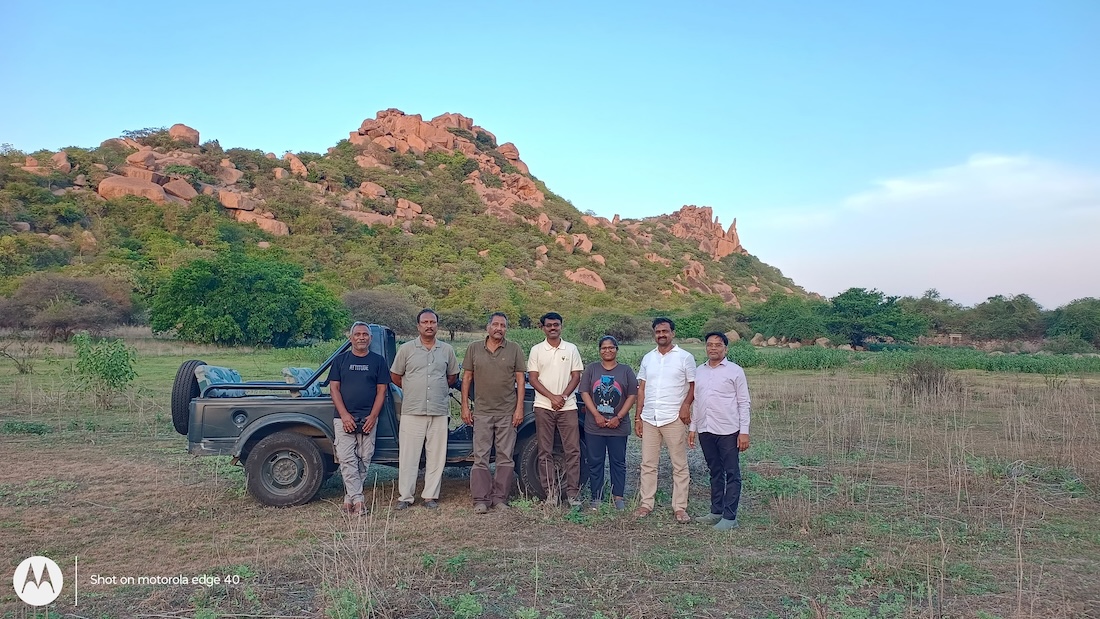There are days in fieldwork that linger in the heart like a birdsong caught in memory. Soft, melodic, and unshakably vivid. The 4th of May was one such day.
Under the leadership of Dr. Sujit Narwade, a field survey was conducted at the Ankasamudra Bird Sanctuary, located in Hagaribommanahalli, Karnataka. This site, now recognized as a Ramsar wetland of international importance, holds significant ecological value for both resident and migratory avifauna.
The Bombay Natural History Society (BNHS) is currently engaged in long-term bird conservation initiatives in the Ankasamudra wetland and the adjacent Tungabhadra backwaters. Despite extensive field experience across various wetlands, the visit to Ankasamudra offered a distinct and memorable encounter. The morning began under an overcast sky, shielding the region from the typical summer heat and casting a gentle coolness over the landscape. This climatic reprieve amplified the sensory experience of the ecosystem—leaves glistened with dew, and birdcalls echoed more clearly across the sanctuary.

The approach to the sanctuary was equally revealing. The route meandered through vibrant agricultural lands, dominated by paddy, maize, and groundnut fields. These farmlands are not merely peripheral elements but form an integral part of the broader habitat matrix. The approximately 1 to 1.5 kilometers of these cultivated plots to the Tungabhadra Dam backwaters play a critical role in supporting avian life. Birds utilise these fields for foraging during daylight hours and retreat to the safety of the wetland by evening, where dead trees in the water provide ideal roosting and nesting structures.
Ankasamudra’s strategic location and habitat mosaic make it a crucial refuge within the central Karnataka landscape. Ongoing conservation efforts here are essential for sustaining avian populations and ensuring the long-term ecological health of the region.
Some of these trees, mostly Acacia, stood half-drowned in the lake, their thorny branches outstretched like the spiny arms of time. For birds, though, these were cradles: natural architecture providing safety from predators, support for nests, and a place to rest between flights.
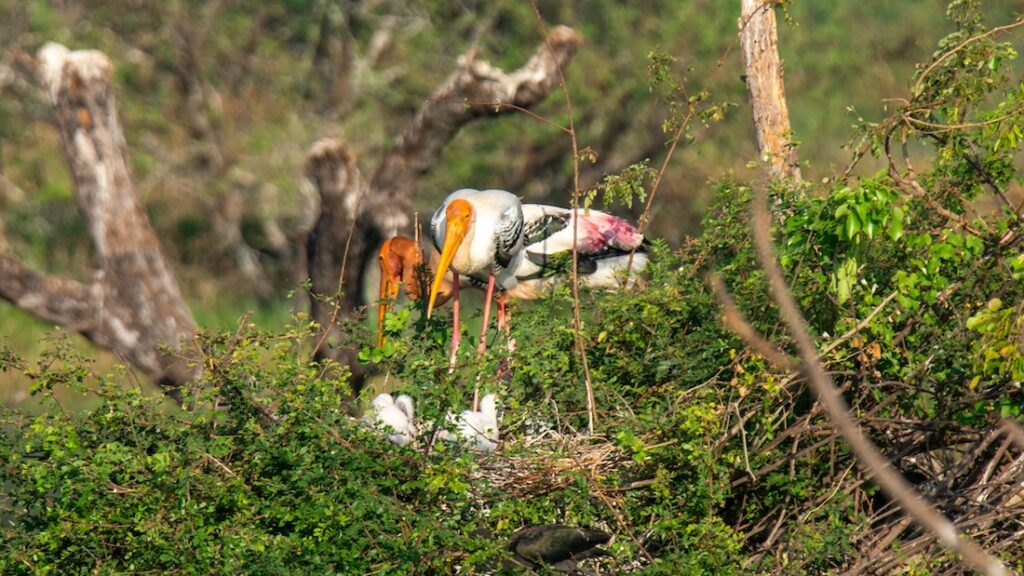
We arrived around 6 a.m. and were greeted by a soundscape that seemed plucked from another era, where nature led the orchestra, and we were merely listeners. The symphony of birdcalls stirred something nostalgic in me. It reminded me of old films where every morning was quieter, every sky fuller of wings. Birds arrived in flocks, cutting across the sky like brushstrokes. Ducks glided between patches of water lilies, and the air smelled of wet earth and promise.
The real treat, though, was spotting a pheasant-tailed jacana. Once familiar but now rarely seen in Ankasamudra. This was a moment of sheer wonder for the GreenHBH, a local conservation enthusiast team that joined us. While the BNHS team may have grown accustomed to this species, watching the GreenHBH members react, eyes wide, binoculars shaky, was a reminder that awe is not reserved for the rarest finds, but for the rediscovery of what we thought we had lost.
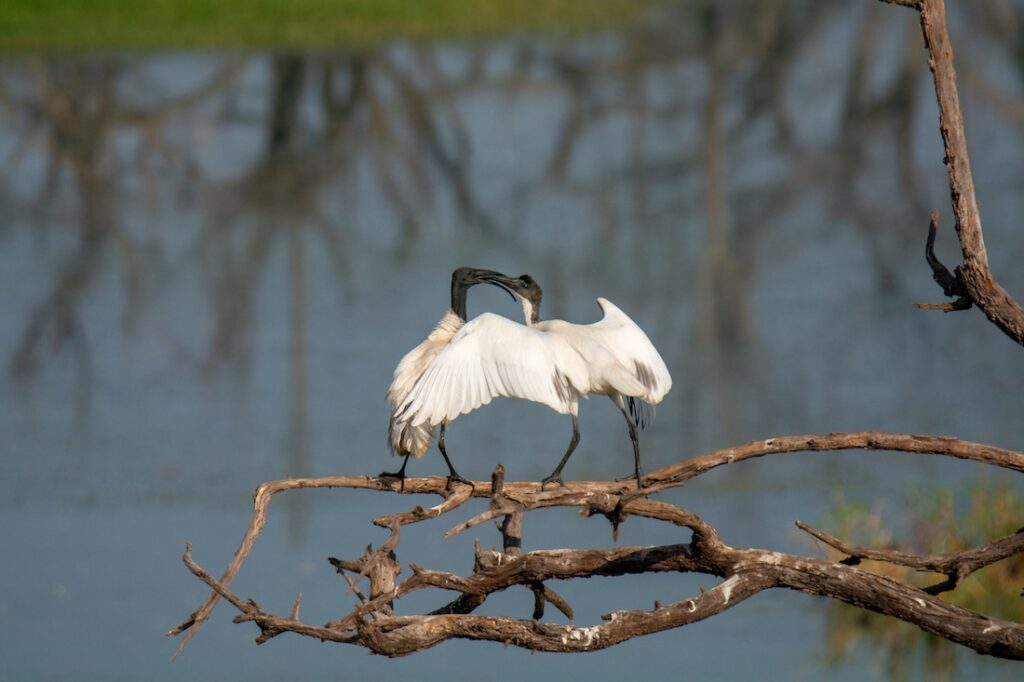
The sanctuary pulsed with life: Painted storks, Spot-billed Pelicans, Openbill Storks, Grey herons, and Black-headed Ibises stood on branches like sentinels, while flocks of ducks floated below, seemingly unbothered by our presence. In every direction, birds were nesting, feeding chicks, preening, and resting in a city of feathers held together by instinct and water.
By afternoon, the sun had returned, though not with full force. We moved to the Tungabhadra backwaters, where monsoon waters once swallowed everything up to the height of electric poles. But now, in summer’s retreat, the waters had pulled back, revealing wide, open ground. Here, where only fishermen and herders occasionally tread, the birds had claimed their space.

The soil was firm, the air still. Grasses like Eragrostis spp. and Dicanthium spp. had begun their silent surge, covering the exposed land in green. The insect population, awakened by moisture and sun, was in full swing—a feast for the aerial hunters. It was here we saw the nesting grounds of Small and Oriental pratincoles, Blue-tailed bee-eaters, Black-winged stilts, and more. Little ringed plovers, Kentish plovers, Tawny larks, and Red-wattled lapwings joined the chorus, each playing its part in this complex ecological drama.
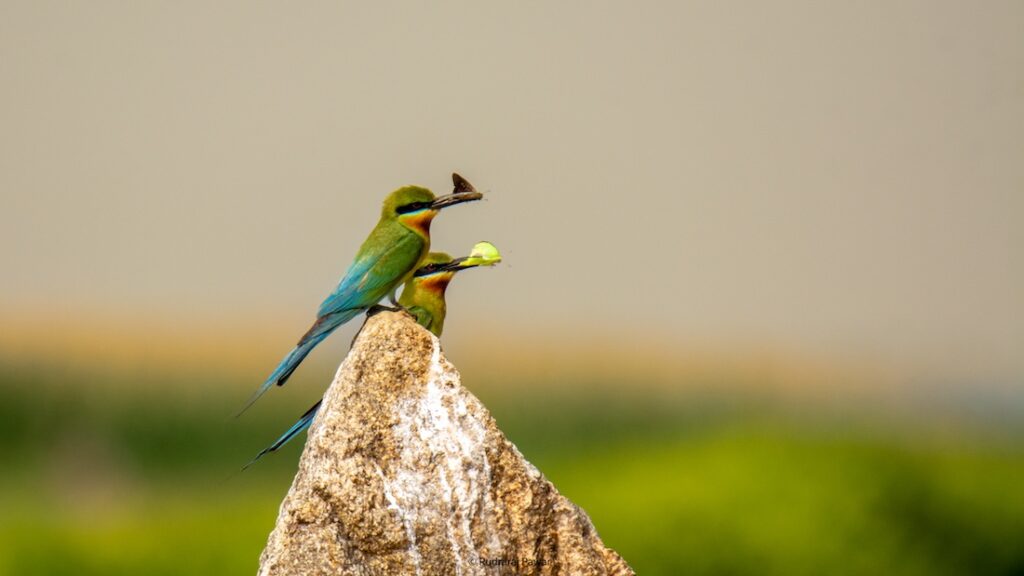
And then, like a scene painted in sunlight, we counted the flock of blue-tailed bee-eaters, perhaps more than 130. Their feathers caught the light like stained glass. They danced through the air, dipping and soaring, catching dragonflies mid-flight. We sat for hours just watching them, transfixed. It felt less like observation and more like meditation. As the sun dipped low, we gathered with the GreenHBH team at another backwater patch, a serene field where grass barely kissed the ankle. No crowds, no noise, just us, the birds, and the hum of the earth winding down.
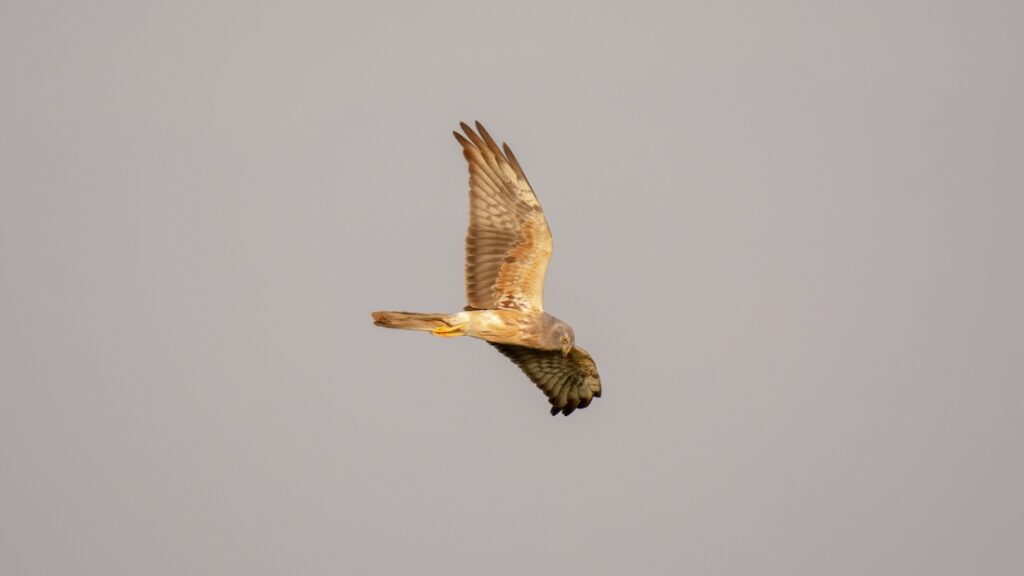
That evening wasn’t just about watching birds. It was about sharing stories. Mr Anand Babu from GreenHBH spoke of how the group began—not with funding or fame, but with shared purpose. Local businesspeople, A schoolteacher named Maheshwar, a fisherman named Irfan, and many others—all locals with deep ties to the land—came together to protect what they loved. Some contribute funds, others their time, their boats, or their voices in community meetings. Irfan, once a full-time fisherman, now helps monitor birds and conduct rescues. His boat, once a tool of livelihood, is now also a vessel of conservation. They have saved otters, birds, reptiles, sometimes with the help of forest officials, sometimes with just heart and a little ingenuity.
The following morning, the team had the privilege of meeting Mr. Vallabh Chandra, a descendant of the Vijayanagara kings of Hampi and a devoted conservationist. His enduring vision for ecological preservation, rooted in both ancestral heritage and scientific understanding, left a profound impression on all of us. Mr. Chandra embodies a rare harmony between cultural legacy and environmental responsibility, where the wisdom of tradition meets the pressing needs of modern conservation. Quite remarkably, he has cultivated an entire forest near his residence—a living testament to his unwavering commitment.
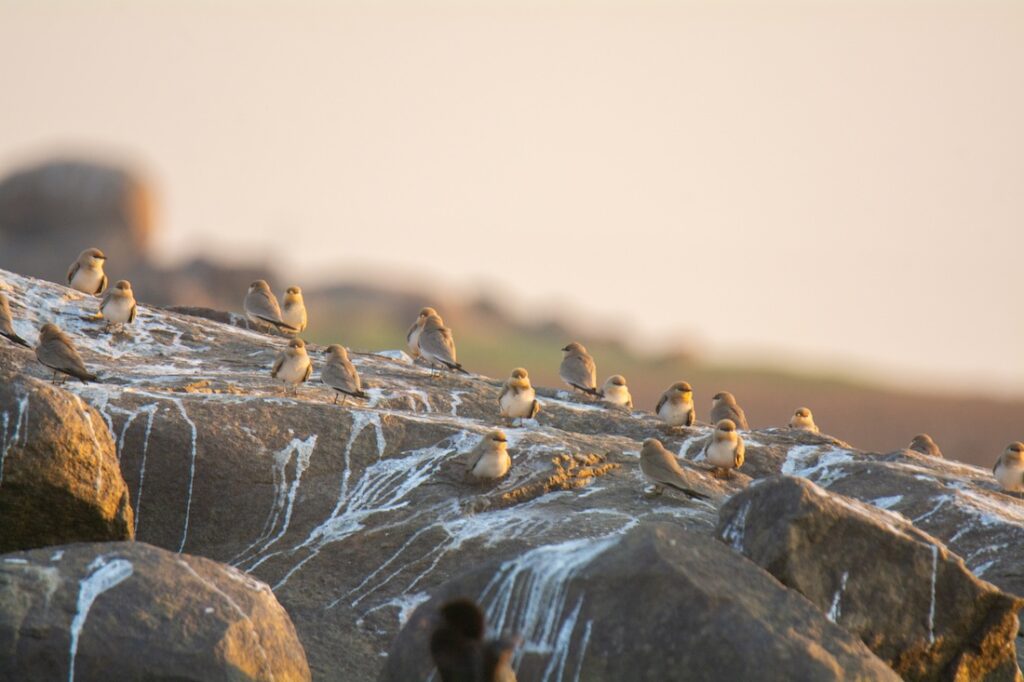
He led us through vibrant nesting grounds echoing with the calls of pratincoles, plovers, stilts, lapwings, little terns, and river terns. His knowledge, as expansive and fluid as the backwaters he protects, brought every footstep to life with meaning and insight. Later, he took us to another site near Hampi—an expanse of land he has personally safeguarded, allowing nature to reclaim and regenerate at its own pace. In this quiet sanctuary, untouched by development, the forest is not planted but awakened. It grows wild and free under his watchful eye, a living monument to what patient, purposeful conservation can achieve.
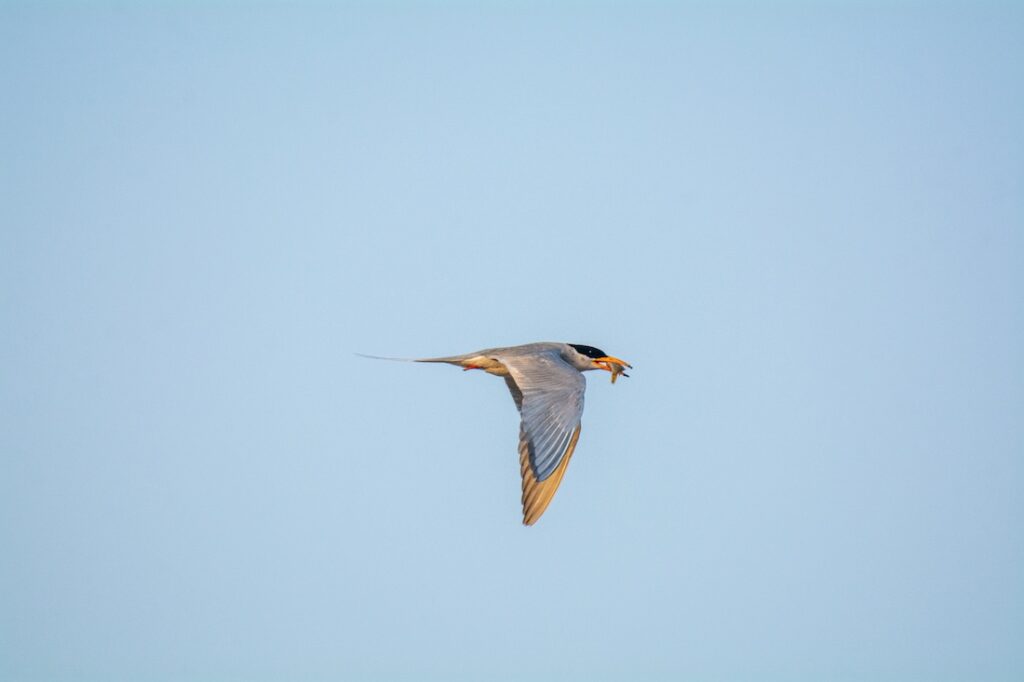
This visit reminded me of a fundamental truth: conservation is not a top-down effort. Yes, researchers study, document, and recommend. But it is the people who live in these places, breathe their air, walk their soil, and raise their children beside these wetlands who are the real stewards. They act faster, understand more intuitively, and stay longer than we ever can.
If a fisherman can become a rescuer, if a schoolteacher can educate generations of children about the birds beyond their textbooks—then perhaps the question isn’t “Can I help?” but rather “How will I?”
Even small efforts matter. A nest left undisturbed. A child is taught to listen to birds. A phone call was made to report an injured animal. Each ripple becomes a wave.
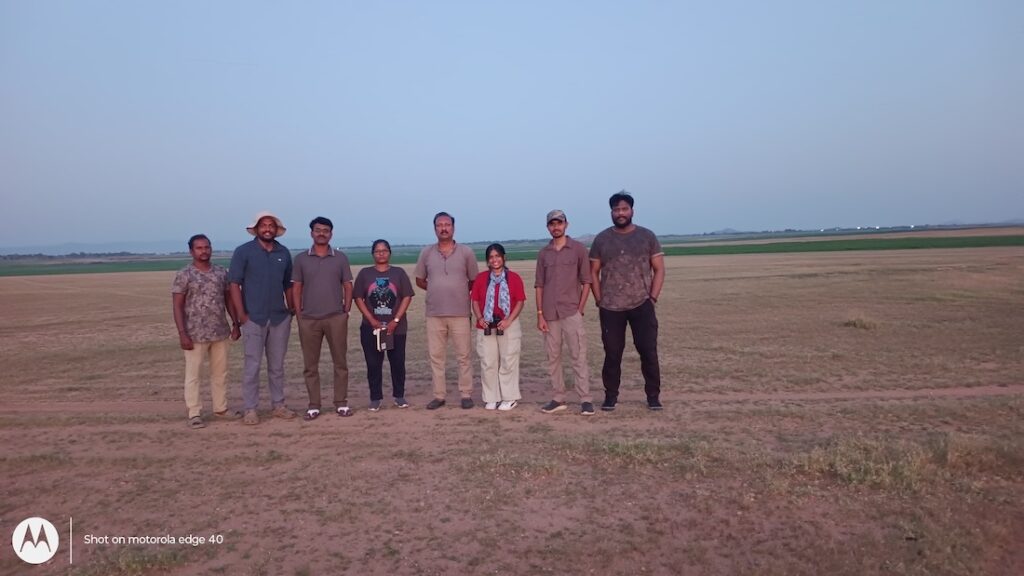
So, here’s to the birds. To the backwaters. And to the many quiet heroes, winged and human alike, who keep these places alive. Their stories remind us that conservation isn’t just about saving species—it’s about preserving relationships, cultures, and the natural rhythms that sustain us all. In a world rushing forward, these wetlands whisper the wisdom of patience, balance, and coexistence.
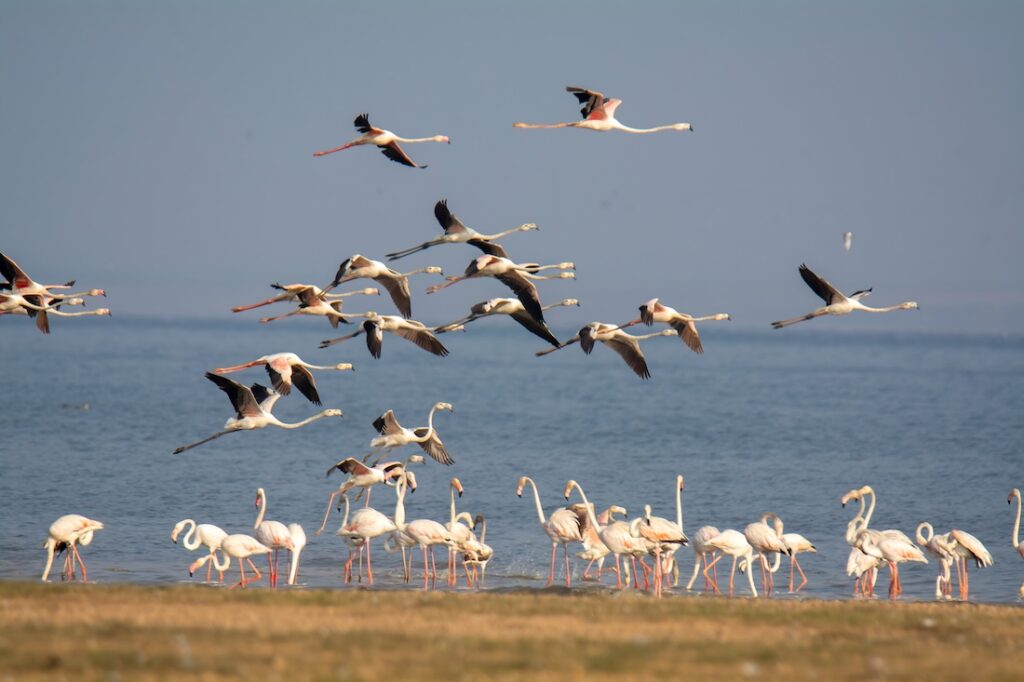
And while local communities are the heartbeat of daily stewardship, organizations like the BNHS are the backbone, studying, guiding, advocating, and tirelessly working to protect these fragile ecosystems. BNHS has long been the torchbearer of scientific conservation in India, and it will continue to be so, not just today, but for generations to come. The path of conservation is long, but with dedicated hands and hopeful hearts, it is a journey we will walk together forever.
Note: The blog is based on a joint site visit by BNHS and GreenHbH (Green Hagaribommanahalli)

